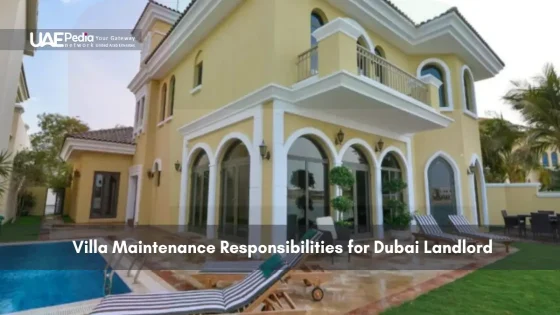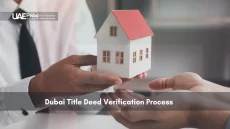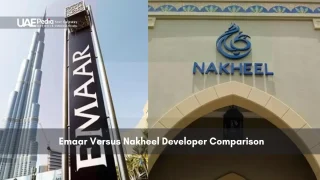Did you know over 70% of transactions in this glittering metropolis hinge on valuations aligned with official benchmarks? Whether you’re eyeing a sleek Downtown high-rise or a Palm Jumeirah villa, understanding how experts pin numbers to sand and steel shapes every deal.
This guide pulls back the curtain on the systems that keep the region’s real estate engine humming. We’ll walk through trusted approaches used by local authorities and global investors alike—no jargon, just clarity. You’ll see how innovation meets tradition here, from AI-powered tools to time-tested regulatory frameworks.
Bodies like the DLD and RERA don’t just set rules—they craft stability. Their standards ensure fairness whether you’re leasing, selling, or securing financing. And with tech transforming appraisals faster than a desert sunset, we’ll show you what’s changing (and what remains timeless).
By the end, you’ll grasp:
- Why precision matters in this fast-paced arena
- How tech reshapes age-old evaluation practices
- Where trusted guidelines protect your interests
Introduction to Dubai’s Dynamic Real Estate Landscape
Picture this: a waterfront villa’s price tag swings 15% based on which marina it faces. That’s the thrill – and challenge – of navigating a skyline where sun-drenched towers compete with artificial archipelagos for attention. Three factors currently steer this arena: economic momentum from global events, neighborhood prestige, and that ever-shifting balance between what’s available and who wants it.
Understanding Current Market Conditions
Beachfront addresses still command premium prices, but areas like Jumeirah Village Circle now rival established hubs thanks to infrastructure upgrades. Tourism rebounds and tax incentives keep demand robust, while developers race to match buyer preferences – think smart-home tech over gold-plated faucets. Location isn’t just about zip codes anymore; it’s about future-proof access to metros, schools, and green spaces.
Why Precision Matters More Than Ever
An overpriced unit gathers dust. An undervalued gem sparks bidding wars. Getting assessments right protects sellers from leaving money on the table and helps buyers avoid “buyer’s remorse” in a fast-moving sector. This is where trusted valuation frameworks become your compass – they translate hype into hard numbers, balancing emotional appeal with cold, hard data.
The Fundamentals of Property Valuation in Dubai
Imagine walking into a sunlit penthouse where the view alone adds six figures to the price tag. Here’s the secret sauce: experts weigh three non-negotiables – square footage, neighborhood buzz, and upkeep quality. A two-bedroom unit in Business Bay might fetch AED 2.1 million, while an identical layout in JLT could swing 18% higher – all thanks to proximity to metro lines or waterfront access.
Key Factors Influencing Value
Let’s break it down. A villa’s age isn’t just a number – cracked tiles or outdated wiring can slice 10-15% off its appeal. Then there’s location gold: units near Expo City hubs saw values jump 22% post-2022 events. “You’re not just buying walls,” says local appraiser Fatima Al-Mansoori. “You’re investing in schools three blocks away and the new park breaking ground next year.”
Overview of Valuation Principles
Think of it as a recipe. Start with recent sales of similar homes – that’s your base flavor. Adjust for extras like smart thermostats or private pools (the chili flakes of real estate). Finally, stir in broader trends: are interest rates rising? Is there a tech corridor planned nearby? One Palm Jumeirah developer recently upped prices by 9% after securing permits for a beach club – proving even paper plans have weight.
“A valuation isn’t a snapshot – it’s a time-lapse of what that address could become.”
Role of Regulatory Bodies in Dubai Real Estate
What if every real estate deal had a referee ensuring fair play? That’s exactly what happens here. Dubai’s thriving sector leans on two guardians: the Dubai Land Department (DLD) and Real Estate Regulatory Agency (RERA). Their rulebooks turn chaotic negotiations into smooth transactions, balancing investor ambitions with consumer protections.
DLD: The Architect of Trust
The DLD doesn’t just issue paperwork—it builds confidence. Their guidelines mandate:
- Standardized reporting formats for appraisals
- Mandatory licensing for valuation experts
- Public access to historical transaction data
This triad prevents guesswork. When assessing a waterfront apartment, professionals cross-check recent sales through DLD’s unified platform—no more “my cousin sold his for AED 3M last month” anecdotes.
RERA: The Quality Enforcer
RERA steps in when opinions clash. Last year, they resolved 82% of disputes within 45 days through:
| Initiative | Impact |
|---|---|
| Certified Broker Program | Reduces misinformation |
| Rental Index | Sets fair lease rates |
| Project Registration | Blocks off-plan scams |
“We’re not just rule-makers—we’re matchmakers between market reality and investor expectations.”
Together, these bodies ensure income-based assessments consider actual rental yields, not wishful thinking. A Downtown Dubai studio’s value? It’s calculated using verified occupancy rates and expense ratios, not Instagram views.
Sales Comparison and Market Analysis Techniques
Think of real estate pricing like matching puzzle pieces—each piece represents a recently sold home with similar traits. This comparative approach anchors prices in reality, blending art and science to answer the ultimate question: What’s fair value right now?
How Comparative Analysis Works
Experts start by hunting for “comparables”—homes matching your target’s size, age, and neighborhood vibe. A three-bedroom apartment in JLT might be compared to five recent sales, adjusting for differences. Key factors they weigh:
- Location gold: Proximity to metro stations or waterfronts can swing values by 12-18%
- Condition check: Renovated kitchens or cracked facades directly impact appeal
- Investment whispers: Planned schools or retail hubs add future value
One agent shared a juicy tidbit: “We once adjusted a Palm Jumeirah villa’s price upward by AED 400k because its rooftop pool faced the Burj Al Arab—views matter here more than square footage.”
Data gathering isn’t just about spreadsheets. Teams visit sites, snap photos, and even note nearby noise levels. Then comes the math—applying percentage adjustments based on verified sales. The result? A price range that makes sense today, not six months ago.
“Comparison isn’t just copying numbers—it’s decoding what makes each address unique.”
Income-Based Valuation Approaches
What if your apartment’s rent checks could reveal its true worth? That’s the magic of income-focused analysis—a favorite tool for investors eyeing assets that generate steady cash flow. These approaches turn rental numbers into concrete figures, perfect for assessing everything from studio leases to commercial towers.
Direct Capitalization: The Investor’s Calculator
Start with net operating income (NOI)—annual rent minus expenses like maintenance and taxes. Divide that by the capitalization rate (a percentage reflecting risk and return expectations). Presto! You’ve got a value estimate. A building generating AED 500k yearly NOI with a 7% cap rate? Worth roughly AED 7.14 million.
| Metric | Example | Impact |
|---|---|---|
| NOI | AED 300k | Base figure |
| Cap Rate | 6.5% | Market benchmark |
| Value | AED 4.6M | Result |
Gross Income Multiplier: The Quick Math Hack
No time for complex calculations? The GIM method compares a building’s price to its gross annual rent. If a villa sells for AED 2.4M and brings in AED 200k yearly rent, its multiplier is 12. Lower numbers often signal better deals—but always cross-check with local averages.
“Smart buyers treat income approaches like X-rays—they reveal the financial bones beneath the marble countertops.”
Understanding these techniques helps buyers spot overpriced listings or hidden gems. While tech tools automate some steps, human judgment still matters—like adjusting for vacancies or upcoming maintenance costs. Pair these methods with comparative sales data, and you’ll craft valuations that balance today’s income with tomorrow’s potential.
Cost Approach and Replacement Value Calculations
Ever wondered what it costs to rebuild that beachfront villa from scratch? This method strips away market hype to focus on raw numbers—bricks, labor, and the premium placed on unique features. Unlike other approaches, it answers a simple question: “What would someone pay to recreate this exact structure today?”
Estimating reconstruction costs
Experts start with blueprints. They calculate current prices for materials like Emirati marble or energy-efficient glass, then factor in labor rates—which can spike during demand surges like Expo events. A 2023 study showed Dubai’s construction costs rose 9% due to supply chain shifts.
Three elements shape these estimates:
- Modern must-haves: Smart-home systems add 12-18% to rebuild budgets
- Depreciation detective work: Sun-faded facades or outdated plumbing reduce value
- Location premiums: Waterfront lots require pricier foundation work
| Cost Component | Average Rate (AED/sq.ft) | Unique Feature Impact |
|---|---|---|
| Basic Construction | 850 | +0% |
| Luxury Finishes | 1,100 | +25% |
| Smart Technology | 1,250 | +45% |
“Rebuilding costs aren’t just about cement prices—they’re snapshots of what buyers value right now.”
This approach shines for newer buildings or custom homes where comparables are scarce. A villa with a rare rooftop terrace? Its replacement rate reflects both material costs and buyer cravings for Instagram-worthy features. While tech tools crunch numbers faster than ever, human judgment still weighs how demand shifts—like post-pandemic desires for home offices—affect rebuild priorities.
Investment Value Method for Strategic Property Buying
What if your next real estate move could predict tomorrow’s profits today? This forward-thinking approach helps investors cut through market noise by focusing on future potential rather than just current prices. It’s like having a financial crystal ball—one grounded in spreadsheets instead of magic.
Assessing Future Cash Flows and ROI
Smart buyers start by mapping out income streams. Let’s say you’re eyeing a two-bedroom unit projected to rent for AED 120k annually. Subtract expenses like maintenance (AED 15k) and community fees (AED 8k), and you’ve got a net cash flow of AED 97k. Divide that by your purchase price to find your ROI percentage.
| Year | Rental Income | Expenses | Net Cash Flow | ROI |
|---|---|---|---|---|
| 1 | AED 120k | AED 23k | AED 97k | 6.8% |
| 3 | AED 132k | AED 25k | AED 107k | 7.5% |
| 5 | AED 145k | AED 28k | AED 117k | 8.2% |
Depreciation plays a sneaky role here. While your asset ages, tax rules let you deduct 2-5% annually from its value. This phantom expense boosts cash flow by lowering taxable income. One investor we spoke to saved AED 18k yearly using this strategy—funds they reinvested into smart home upgrades.
“Depreciation isn’t just accounting—it’s the silent partner in every investment equation.”
Interest rates add another layer. A 1% hike could slash your target ROI by 15%, making pre-approval checks essential. This guide-style approach helps you stress-test assumptions against market shifts. Pair it with local expertise, and you’ll spot opportunities where others see risks.
Exploring the Price Per Square Foot Method for Accurate Valuations
Picture comparing two apartments side by side—one costs AED 1.5M, the other AED 2.3M. The difference? Often, it’s hidden in the math behind each square foot. This straightforward approach slices through complexity by focusing on one number: the rate per unit area.
Here’s how it works: divide a home’s total price by its livable square footage. A 1,200 sq.ft villa selling for AED 2.4M? That’s AED 2,000 per sq.ft. Local government portals provide recent sales data to benchmark these rates, creating apples-to-apples comparisons across neighborhoods.
| Property Type | Size (sq.ft) | Total Price | Price/Sq.ft |
|---|---|---|---|
| Downtown Apartment | 800 | AED 1.2M | AED 1,500 |
| Business Bay Office | 2,500 | AED 5M | AED 2,000 |
This method shines for quick comparisons but has limits. A penthouse with marina views might command higher prices per sq.ft than a ground-floor unit—even if their sizes match. Investors love it for estimating return potential, while sellers use it to justify asking rates.
“It’s like measuring fabric,” says appraiser Karim Abbas. “You need to know the baseline rate before adding embroidery.” Pair this technique with government-verified data and neighborhood trends, and you’ll spot outliers faster than a falcon diving for prey.
property valuation methods dubai market: A Comprehensive Overview
How do experts turn desert plots into million-dollar addresses? The answer lies in blending fresh market whispers with time-tested appraisal wisdom. Let’s unpack how data meets human insight to create valuations you can bank on.
Integrating Market Data With Valuation Services
Think of recent sales figures as breadcrumbs leading to fair prices. Licensed teams cross-reference listings, lease histories, and even schools’ expansion plans. A 2024 report showed valuations using DLD-verified data had 23% fewer disputes. Here’s what pros track:
| Data Source | Role in Valuation | Impact Level |
|---|---|---|
| Recent Sales | Baseline Comparisons | High |
| Rental Yields | Income Projections | Medium |
| Infrastructure Plans | Future Value Indicators | High |
One appraiser shared: “We once adjusted a JBR apartment’s value by 9% after checking upcoming metro station blueprints—details matter more than square footage here.”
Leveraging Professional Appraisal Expertise
Certified experts act as translators between raw numbers and real-world worth. Bodies like the Dubai Land Department ensure appraisers meet strict training standards—no weekend courses allowed. Their reports balance three schools of thought:
- Cost-based analysis for unique builds
- Income models for rental assets
- Comparative metrics for standard units
“Our licenses require 300 hours of field training—this isn’t guesswork. We see past glossy brochures to what truly moves markets.”
Combining these approaches creates valuations that satisfy banks, buyers, and dreamers alike. Whether you’re eyeing a Downtown loft or a villa near top schools, trusted methods turn uncertainty into action plans.
Market Trends and Their Impact on Property Valuation
Ever noticed how a single crane on the horizon can shift an entire neighborhood’s worth? Right now, three forces are rewriting the rules for assessing real estate: tourism rebounds, interest rate swings, and that delicate dance between what’s built and who’s buying. Let’s unpack how these currents shape what your space is worth.
Economic Indicators and Supply-Demand Effects
Valuation experts track metrics like hotel occupancy rates and mortgage costs like chefs taste-testing soup. A 2023 RERA report showed demand for homes outpaced new supply by 15%—pushing prices up 12% in prime areas. Here’s how they connect the dots:
| Factor | Current Trend | Impact on Value |
|---|---|---|
| Tourism Growth | 14% YoY Increase | +8% Rental Yields |
| Interest Rates | 0.5% Hike | -5% Buyer Budgets |
| New Developments | 28,000 Units Added | Regional Price Adjustments |
Take Jumeirah Village Circle—its inventory grew 20% last year, yet values held steady thanks to new metro links. “Land availability isn’t just about empty plots,” notes economist Sara Al-Fardan. “It’s about where growth happens and when buyers catch on.”
Top-tier valuation firms blend these signals with hyperlocal data. They might flag that villas near upcoming green spaces command 9% premiums, while units facing construction sites lag. It’s not guesswork—it’s mapping how tomorrow’s skyline alters today’s math.
“We’re not just counting cranes—we’re predicting which ones will cast the longest shadows on your investment.”
Practical Applications of Valuation in Buying, Selling, and Leasing
Ever felt unsure if your listing price hits the sweet spot? Accurate assessments act like GPS for negotiations—they show where you stand and guide you toward fair deals. Whether you’re leasing a studio or financing a villa, understanding value shifts the power dynamic from guesswork to strategy.
Setting Realistic Price Expectations
Picture two neighbors selling identical townhouses. One lists 18% above recent sales, the other uses land department data to match market rates. Guess who attracts serious offers first? Knowing true worth prevents overpricing (which scares buyers) or underselling (which costs profit).
The cost approach helps when unique features muddy comparisons. Imagine rebuilding a heritage-style home with custom arches. Recent material costs and labor rates from the land department’s database create a baseline, while depreciation adjustments reflect wear-and-tear realities.
| Situation | Valuation Method | Outcome |
|---|---|---|
| Lease Renewal | Rental Income Analysis | +9% Fair Rate Adjustment |
| Mortgage Approval | Sales Comparison | Bank Offers 85% LTV |
| Resale Pricing | Market Trends Review | 5 Bids in 10 Days |
Rental income calculations turn lease agreements into actionable insights. A JBR apartment generating AED 120k yearly might justify a AED 1.8M price tag using capitalization rates—a figure lenders trust for loan approvals. Updated market trends from RERA reports add context, like how new metro stations boost demand in emerging areas.
“We helped a seller avoid a AED 300k mistake by cross-checking their ‘gut feeling’ price against verified sales—it’s not personal, it’s math.”
By aligning with land department standards and tracking market trends, you sidestep emotional pricing. Buyers gain confidence to bid competitively, while sellers secure faster closings. It’s not magic—it’s using the right tools to speak the market’s language.
The Role of Technology and Data Analysis in Modern Valuation
What if your smartphone could appraise a skyscraper? That’s the reality reshaping how experts determine worth in today’s fast-paced landscape. Advanced algorithms now crunch numbers faster than a falcon’s dive, blending satellite imagery, live transaction feeds, and neighborhood sentiment into precise estimates.
Online Tools: Your Digital Appraisal Partner
Platforms like DXBinteract.avm deliver instant estimates using AI-trained models. One agent shared how a client’s Palm Jumeirah villa assessment took 47 seconds—down from three days. These tools cross-reference:
- Rental yield trends across 12+ sources
- Live construction progress via drone feeds
- Social media buzz about nearby amenities
Data’s Secret Superpower
Heatmaps now reveal micro-trends invisible to the naked eye. A recent case saw JVC townhouse values adjusted by 8% after sensors detected foot traffic spikes near a new park. Analysts track 137 variables—from school waitlists to ride-share patterns—to predict shifts before they hit headlines.
“We’re not replacing human expertise—we’re giving it jet fuel. Our models process 20 years of sales data in minutes, spotting patterns even veterans miss.”
This tech-forward approach keeps pace with fluctuating market conditions, offering real-time adjustments. Whether you’re comparing waterfront units or evaluating future metro impacts, it’s a new era where data and desert wisdom walk hand-in-hand.
Final Thoughts on Mastering Dubai Property Valuation
Ever watched a desert sunrise paint the dunes in new light? That’s the power of sharp valuation skills—revealing hidden value others miss. Our journey through appraisal techniques shows how blending tradition with innovation creates confidence in every decision.
Comparing similar properties remains foundational, whether analyzing waterfront units or suburban villas. Differences in finishes, sightlines, or community plans can shift numbers dramatically—a lesson that applies doubly to residential properties with unique lifestyles attached. Pair this with income models and cost approaches, and you’ve got a toolkit that adapts to towers, townhouses, or future developments.
Regulatory frameworks and tech tools aren’t just extras—they’re your allies. From RERA’s dispute resolutions to AI-driven heatmaps, these elements turn guesswork into strategy. Stay curious: emerging trends like sustainability metrics and neighborhood sentiment analysis will reshape assessments faster than ever.
Ready to dive deeper? Bookmark this guide, revisit key sections, and watch how combining methods illuminates opportunities. The skyline’s always changing—but with the right insights, you’ll always spot the gems shining brightest.
RERA sets guidelines for transparency and standardization, ensuring appraisers consider factors like location, condition, and market trends. Their rental index also impacts income-based valuations for leased units.
Income-based approaches like direct capitalization—using net operating income and market cap rates—are gold standards. They align with Dubai’s dynamic rental market and investor-driven demand.
The cost approach factors in depreciation and current construction rates, which is crucial for heritage areas like Al Fahidi or villa communities where replacement value affects resale potential.
While platforms like DLD’s *e*valuation provide instant estimates, they lack nuance. Top agencies blend AI-driven data with on-ground insights—like upcoming metro lines or school expansions—for precision.
Zones like Dubai Marina or Downtown command premium prices due to high ROI potential. Valuers analyze buyer demand, leasehold vs. freehold regulations, and infrastructure projects to forecast returns.
Views, floor levels, and community amenities! Two identical units in Palm Jumeirah can differ by 20% based on beach access or Burj Khalifa sightlines—details bulk data often misses.
Fast. Districts like Jebel Ali saw 12-15% spikes post-2020 due to infrastructure boosts. Appraisers monitor event legacies and government masterplans to adjust models in real time.
Banks like Emirates NBD or ADCB require updated appraisals to confirm collateral value. It prevents under/over-leveraging and ensures alignment with Dubai’s fluctuating interest rates.












